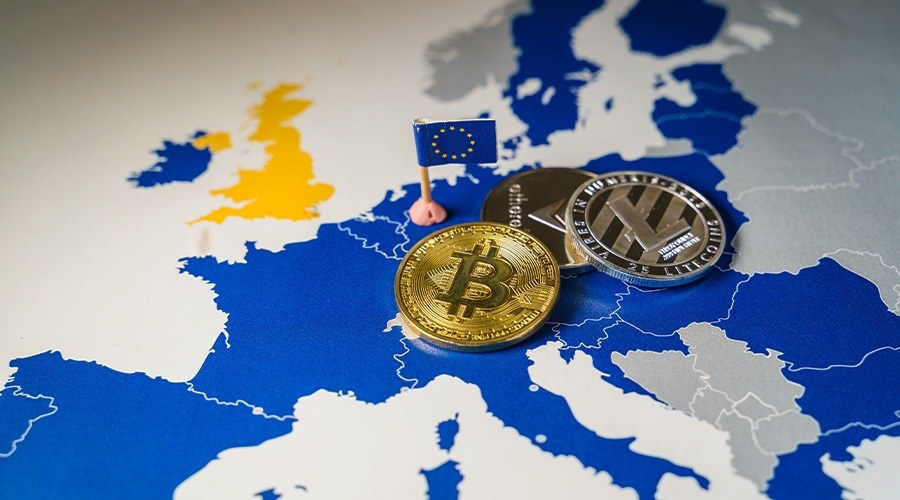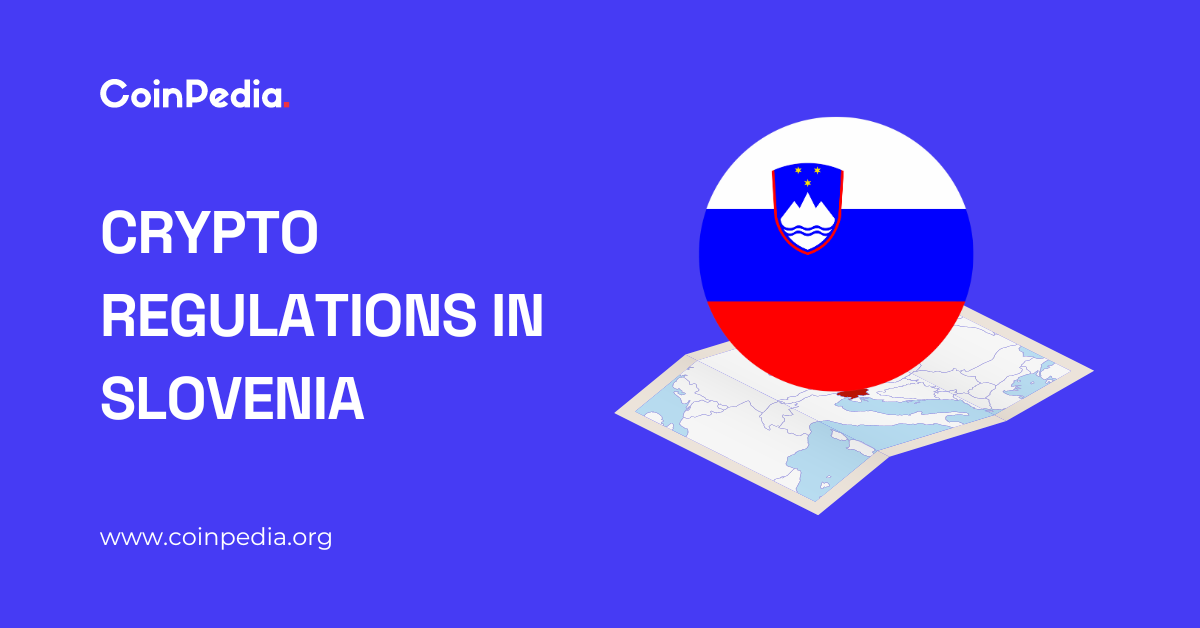Regulation
MiCA’s Looming Deadline: Crypto Exchanges Disrupt Stablecoins

The European Union’s Markets in Crypto-Assets (MiCA) Regulation will come into force on June 30, just three days from now. Many cryptocurrency exchanges offering services in the Union are therefore already taking action, mainly by abandoning stablecoin offerings.
“This will be a first step in entering the new regulatory framework, and it will have a significant impact on the stablecoin market in the European Economic Area (EEA),” said Binance, the largest cryptocurrency exchange by trading volume.
Crypto Exchanges Have Abandoned Stablecoins
At least four cryptocurrency exchanges have confirmed they are restricting access to some stablecoins to EEA users. Bitstamp was the latest to confirm on Wednesday that it would delist the euro-denominated stablecoin, EURT, ahead of a June 30 deadline.
EURT is a euro-pegged stablecoin issued by Tether, the company behind the largest stablecoin in circulation, USDT, with a market cap of over $112.7 billion. Interestingly, Bitstamp became one of the first crypto exchanges to list EURT in November 2021.
“Electronic Money Tokens (EMTs) that are not denominated in euros and are already available on exchanges but are not subject to MiCA regulation, will not be delisted, although their availability to European customers will be limited on certain products.” Bit stamp wrote in his ad.
“Bitstamp will not list any new EMTs that do not meet the MiCA requirements nor will it engage in any commercialization of the same.”
Another major name to act before MiCA is Binance. As Finance Magnates reported earlier, The crypto exchange has already blocked access to some servicesincluding copy trading. This will also result in other restrictions, including restricting the purchase of Stablecoins not allowed and limit new borrowing and transfers of unauthorized stablecoins in margin trading.
Uphold, another Ripple-related crypto exchange, has also confirmed the delisting of six stablecoins, including the popular USDT, for European users. However, it will continue to support USDC, EURC, and PYUSD.
Comply with MiCA from June 30
Similar to MiFID, Mica will bring together cryptocurrency services in the EU under a single regulatory framework. The regulation will impact the distribution of cryptocurrencies in the bloc, meaning that both retail and institutional players will be affected in one way or another.
With the approval of the European Parliament in 2023, MiCA is expected to be implemented in two phases: Stablecoin rules to come into effect on June 30, 2024 then broader compliance on exchanges and wallets which will come into force from December 30, 2024.
Under MiCA, stablecoins backed by fiat currencies on the block would be categorized as “e-money tokens,” while other asset-backed tokens would be “asset-referenced tokens.” In both cases, stablecoin issuers must maintain a 1:1 reserve. This will also place algorithmic stablecoins under liability, requiring them to maintain their value.
The regulations would also limit the daily limit of transactions with non-euro stablecoins to just $1 million.
“As the world’s oldest cryptocurrency exchange, we have always advocated for a proportionate response to regulation that protects consumers while allowing for the continued maturation of cryptocurrencies as an asset class,” said James Sullivan, UK Managing Director at Bitstamp. “We are communicating directly with the small proportion of our customers whose asset mix is affected.”
The exchanges have been preparing for months
A few crypto exchanges were already taking steps to comply with MiCA earlier this year. In March, OKX confirmed its delisting from USDT pairs in the EEA, without mentioning MiCA. “Please note that not all tokens are available on all markets due to regulatory requirements,” reads an email sent by the exchange to its European clients.
Interesting way, Kraken also reviewed the USDT pairs offered in the EU and considered removing them to comply with MiCA, according to a Bloomberg report in March. However, following the report, Mark Greenberg, Kraken’s global head of growth and asset management, clarified that the exchange “continues to list USDT in Europe and we have no plans to remove it at this time.”
“We know that our European customers value access to USDT and we continue to explore all options for offering USDT under the upcoming regime,” he added. “We will of course comply with all legal requirements, even those we do not agree with. But the rules are not yet finalized and we continue to do everything we can to continue to offer all relevant stablecoins to our European customers.”
So far, Kraken has not officially announced anything about removing stablecoin pairs to comply with MiCA.
Interestingly, a recent report found that only 9% of cryptocurrency companies, out of 68 surveyed, are fully MiCA compliant requirements, while another 25% have not yet started preparations.
The European Union’s Markets in Crypto-Assets (MiCA) regulation will come into effect on June 30, just three days from now. As such, many crypto exchanges offering services in the bloc are already taking action, primarily by dropping stablecoin offerings.
“This will be a first step towards entering the new regulatory framework, and will have a significant impact on the stablecoin market in the European Economic Area (EEA),” said Binance, the largest crypto exchange in terms of transaction volume.
Crypto Exchanges Have Abandoned Stablecoins
At least four cryptocurrency exchanges have confirmed they are restricting access to some stablecoins to EEA users. Bitstamp was the latest to confirm on Wednesday that it would delist the euro-denominated stablecoin, EURT, ahead of a June 30 deadline.
EURT is a euro-pegged stablecoin issued by Tether, the company behind the largest stablecoin in circulation, USDT, with a market cap of over $112.7 billion. Interestingly, Bitstamp became one of the first crypto exchanges to list EURT in November 2021.
“Electronic money tokens (EMT) which are not denominated in euros and are already available on exchanges but are not subject to MiCA regulation, will not be delisted, although their availability to European customers will be limited on certain products .” Stamp-bit wrote in his ad.
“Bitstamp will not list any new EMTs that do not meet MiCA requirements nor will it engage in any commercialization of them.”
Binance is another big name that will be making moves ahead of MiCA. As Finance Magnates reported earlier, The crypto exchange has already blocked access to some servicesincluding copy trading. This will also result in other restrictions, including restricting the purchase of unauthorized stablecoins and limit new borrowing and transfers of unauthorized stablecoins in margin transactions.
Uphold, another Ripple-related crypto exchange, has also confirmed the delisting of six stablecoins, including the popular USDT, for European users. However, it will continue to support USDC, EURC, and PYUSD.
Comply with MiCA from June 30
Similar to MiFID, Mica will bring together cryptocurrency services in the EU under a single regulatory framework. The regulation will impact the distribution of cryptocurrencies in the bloc, meaning that both retail and institutional players will be affected in one way or another.
With the approval of the European Parliament in 2023, the MiCA is expected to be implemented in two phases: the rules around stablecoins will come into force on June 30, 2024 and then broader compliance on exchanges and wallets which will come into effect from December 30, 2024.
Under MiCA, stablecoins backed by fiat currencies in the bloc would be categorized as “e-money tokens,” while other asset-backed tokens would be “asset-referenced tokens.” In both cases, stablecoin issuers must maintain a 1:1 reserve. It will also bring algorithmic stablecoins under the purview of the law, requiring them to maintain their value.
The regulations would also limit the daily limit of transactions with non-euro-pegged stablecoins to just $1 million.
“As the world’s oldest cryptocurrency exchange, we have always advocated for a proportionate response to regulation that protects consumers while allowing for the continued maturation of cryptocurrencies as an asset class,” said James Sullivan, UK Managing Director at Bitstamp. “We are communicating directly with the small proportion of our customers whose asset mix is affected.”
The exchanges have been in preparation for months
A few cryptocurrency exchanges had already taken steps to comply with MiCA earlier this year. In March, OKX confirmed the delisting of USDT pairs in the EEA, without mentioning MiCA. “Please note that not all tokens are available on all markets due to regulatory requirements,” noted an email sent by the exchange to its European clients.
Interesting way, Kraken also reviewed USDT pairs offered in the EU and considered removing them to comply with MiCA, according to a Bloomberg report from March. However, following the report, Mark Greenberg, Kraken’s global head of growth and asset management, clarified that the exchange “continues to list USDT in Europe and we have no plans to do so.” withdraw for the moment”.
“We know that our European customers value access to USDT and we continue to explore all options for offering USDT under the next regime,” he added. “We will of course comply with all legal requirements, even those we do not agree with. But the rules are not yet finalized and we continue to do everything we can to continue to offer all relevant stablecoins to our European customers.”
So far, Kraken has not officially announced anything about removing stablecoin pairs to comply with MiCA.
Interestingly, a recent report found that only 9% of cryptocurrency companies, out of 68 surveyed, are fully MiCA compliant needs, while 25 percent have yet to begin preparations.
Regulation
Crypto community gets involved in anti-government protests in Nigeria

Amid the #EndBadGovernanceInNigeria protests in Nigeria, a notable shift is occurring within the country’s cryptocurrency sector. As the general public demands sweeping governance reforms, crypto community leaders are seizing the opportunity to advocate for specific regulatory changes.
Rume Ophi, former secretary of the Blockchain Stakeholders Association of Nigeria (SiBAN), stressed the critical need to integrate crypto-focused demands into the broader agenda of the protests.
Ophi explained the dual benefit of such requirements, noting that proper regulation can spur substantial economic growth by attracting investors and creating job opportunities. Ophi noted, “Including calls for favorable crypto regulations is not just about the crypto community; it’s about leveraging these technologies to foster broader economic prosperity.”
Existing government efforts
In opposition to Ophi’s call for action, Chimezie Chuta, chair of the National Blockchain Policy Steering Committee, presents a different view. He pointed out The Nigerian government continued efforts to nurture the blockchain and cryptocurrency industries.
According to Chuta, the creation of a steering committee was essential to effectively address the needs of the crypto community.
Chuta also highlighted the creation of a subcommittee to harmonize regulations for virtual asset service providers (VASPs). With the aim of streamlining operations and providing clear regulatory direction, the initiative involves cooperation with major organizations including the Securities and Exchange Commission (SEC) and the Central Bank of Nigeria (CBN). “Our efforts should mitigate the need for protest as substantial progress is being made to address the needs of the crypto industry,” Chuta said.
A united call for support
The ongoing dialogue between the crypto community and government agencies reflects a complex landscape of negotiations and demands for progress.
While actors like Ophi are calling for more direct action and the inclusion of crypto demands in protest agendas, government figures like Chuta are advocating for recognition of the steps already taken.
As protests continue, the crypto community’s push for regulatory reform highlights a crucial aspect of Nigeria’s broader fight to improve governance and economic policies. Both sides agree that favorable regulations are critical to the successful adoption and implementation of blockchain technologies, signaling a potentially transformative era for Nigeria’s economic framework.
Read also : OKX Exchange Exits Nigerian Market Amid Regulatory Crackdown
Regulation
Cryptocurrency Regulations in Slovenia 2024

Slovenia, a small but highly developed European country with a population of 2.1 million, boasts a rich industrial history that has contributed greatly to its strong economy. As the most economically developed Slavic nation, Slovenia has grown steadily since adopting the euro in 2007. Its openness to innovation has been a key factor in its success in the industrial sector, making it a prime destination for cryptocurrency enthusiasts. Many believe that Slovenia is poised to become a powerful fintech hub in Europe. But does its current regulatory framework for cryptocurrencies support such aspirations?
Let’s explore Slovenia’s cryptocurrency regulations and see if they can propel the country to the forefront of the cryptocurrency landscape. My expectations are positive. What are yours? Before we answer, let’s dig a little deeper.
1. Cryptocurrency regulation in Slovenia: an overview
Slovenia is renowned for its innovation-friendly stance, providing a supportive environment for emerging technologies such as blockchain and cryptocurrencies. Under the Payment Services and Systems Act, cryptocurrencies are classified as virtual assets rather than financial or monetary instruments.
The regulation of the cryptocurrency sector in Slovenia is decentralized. Different authorities manage different aspects of the ecosystem. For example, the Bank of Slovenia and the Securities Market Agency oversee cryptocurrency transactions to ensure compliance with financial laws, including anti-money laundering (AML) and terrorist financing regulations. The Slovenian Act on the Prevention of Money Laundering and Terrorist Financing (ZPPDFT-2) incorporates the EU’s 5th Anti-Money Laundering Directive (5MLD) and aligns with the latest FATF recommendations. All virtual currency service providers must register with the Office of the Republic of Slovenia.
2. Cryptocurrency regulation in Slovenia: what’s new?
Several notable developments have taken place this year in the cryptocurrency sector in Slovenia:
July 25, 2024:Slovenia has issued a €30 million on-chain digital sovereign bond, the first of its kind in the EU, with a yield of 3.65%, maturing on 25 November 2024.
May 14, 2024:NiceHash has announced the first Slovenian Bitcoin-focused conference, NiceHashX, scheduled for November 8-9 in Maribor.
3. Explanation of the tax framework for cryptocurrencies in Slovenia
The Slovenian cryptocurrency tax framework provides clear guidelines for individuals and businesses. According to the Slovenian Financial Administration, the tax treatment depends on the status of the trader and the nature of the transaction.
- People:Income earned from cryptocurrencies through employment or ongoing business activities is subject to personal income tax. However, capital gains from transactions or market fluctuations are exempt from tax.
- Companies:Capital gains from cryptocurrency-related activities are subject to a 19% corporate tax. Value-added tax (VAT) generally applies at a rate of 22%, although cryptocurrency transactions that are considered as means of payment are exempt from VAT. Companies are not allowed to limit payment methods to cryptocurrencies alone. Tokens issued during ICOs must follow standard accounting rules and corporate tax law.
4. Cryptocurrency Mining in Slovenia: What You Need to Know
Cryptocurrency mining is not restricted in Slovenia, but income from mining is considered business income and is therefore taxable. This includes rewards from validating transactions and any additional income from mining operations. Both individuals and legal entities must comply with Slovenian tax regulations.
5. Timeline of the development of cryptocurrency regulation in Slovenia
Here is a timeline highlighting the evolution of cryptocurrency regulations in Slovenia:
- 2013:The Slovenian Financial Administration has issued guidelines stating that income from cryptocurrency transactions should be taxed.
- 2017:The Slovenian Financial Administration has provided more detailed guidelines on cryptocurrency taxation, depending on factors such as the status of the trader and the type of transaction.
- 2023:The EU adopted the Markets in Crypto-Assets (MiCA) Regulation, establishing a uniform regulatory framework for crypto-assets, their issuers and service providers across the EU.
Endnote
Slovenia’s approach to the cryptocurrency sector is commendable, reflecting its optimistic view of the future of cryptocurrencies. The country’s balanced regulatory framework supports cryptocurrency innovation while protecting users’ rights and preventing illegal activities. Recent developments demonstrate Slovenia’s commitment to continually improving its regulatory environment. Slovenia’s cryptocurrency regulatory framework sets a positive example for other nations navigating the evolving cryptocurrency landscape.
Read also : Hong Kong Cryptocurrency Regulations 2024
Regulation
A Blank Sheet for Cryptocurrencies: Kamala Harris’ Regulatory Opportunity

photo by Shubham Dhage on Unsplash
As the cryptocurrency landscape continues to evolve, the need for clear regulation has never been more pressing.
With Vice President Kamala Harris now leading the charge on digital asset regulation in the United States, this represents a unique opportunity to start fresh. This fresh start can foster innovation and protect consumers. It can also pave the way for widespread adoption across industries, including real estate agencies, healthcare providers, and online gaming platforms like these. online casinos ukAccording to experts at SafestCasinoSites, these platforms come with benefits such as bonus offers, a wide selection of games, and various payment methods. Ultimately, all this increase in adoption could propel the cryptocurrency market forward.
With this in mind, let’s look at the current state of cryptocurrency regulation in the United States, a complex and confusing landscape. Multiple agencies, including the Securities and Exchange Commission (SEC), the Commodity Futures Trading Commission (CFTC), and the Financial Crimes Enforcement Network (FinCEN), have overlapping jurisdictions, creating a fragmented regulatory environment. This lack of clarity has stifled innovation as companies are reluctant to invest in the United States, fearing regulatory repercussions. A coherent and clear regulatory framework is urgently needed to realize the full potential of cryptocurrencies in the United States.
While the US struggles to find its footing, other countries, such as Singapore and the UK, are actively looking into the cryptocurrency sector by adopting clear and supportive regulatory frameworks. This has led to a brain drain, with companies choosing to locate in more conducive environments.
Vice President Kamala Harris has a unique opportunity to change that narrative and start over. Regulation of cryptocurrencies. By taking a comprehensive and inclusive approach, it can help create a framework that balances consumer protection with innovation and growth. The time has come for clear and effective regulation of cryptocurrencies in the United States.
Effective regulation of digital assets is essential to foster a safe and innovative environment. The key principles guiding this regulation are clarity, innovation, global cooperation, consumer protection, and flexibility. Clear definitions and guidelines eliminate ambiguity while encouraging experimentation and development to ensure progress. Collaboration with international partners establishes consistent standards, preventing regulatory arbitrage. Strong safeguards protect consumers from fraud and market abuse, and adaptability allows for evolution in response to emerging trends and technologies, striking a balance between innovation and protection.
The benefits of effective cryptocurrency regulation are multiple and far-reaching. By establishing clear guidelines, governments can attract investors and mainstream users, driving growth and adoption. This can, in turn, position countries like the United States as global leaders in fintech and innovation. Strong safeguards will also increase consumer confidence in digital assets and related products, increasing economic activity.
A thriving crypto industry can contribute significantly to GDP and job creation, which has a positive impact on the overall economy. Furthermore, effective regulation has paved the way for the growth of many businesses such as tech startups, online casinos, and pharmaceutical companies, demonstrating that clear guidelines can open up new opportunities without stifling innovation. This is a great example of how regulation can allay fears of regressive policies, even if Kamala Harris does not repeal the current progressive approach. By adopting effective regulation, governments can create fertile ground for the crypto industry to thrive, thereby promoting progress and prosperity.
Regulation
South Korea Imposes New ‘Monitoring’ Fees on Cryptocurrency Exchanges

Big news! The latest regulatory changes in South Korea are expected to impact major cryptocurrency exchanges like Upbit and Bithumb. Under the updated regulations, these platforms will now have to pay monitoring fees, which could cause problems for some exchanges.
Overview of new fees
In the latest move to regulate cryptocurrencies, the Financial Services Commission announced on July 1 the revised “Enforcement Order of the Act on the Establishment of the Financial Services Commission, etc.” update “Regulations on the collection of contributions from financial institutions, etc.” According to local legislation newsThe regulations require virtual asset operators to pay supervisory fees for inspections conducted by the Financial Supervisory Service starting next year. The total fees for the four major exchanges are estimated at around 300 million won, or about $220,000.
Apportionment of costs
Upbit, which holds a dominant market share, is expected to bear more than 90% of the total fee, or about 272 million won ($199,592) based on its operating revenue. Bithumb will pay about 21.14 million won ($155,157), while Coinone and GOPAX will contribute about 6.03 million won ($4,422) and 830,000 won ($608), respectively. Korbit is excluded from this fee due to its lower operating revenue.
Impact on the industry
The supervision fee will function similarly to a quasi-tax for financial institutions subject to inspections by the Financial Supervisory Service. The new law requires any company with a turnover of 3 billion won or more to pay the fee.
In the past, fees for electronic financial companies and P2P investment firms were phased in over three years. However, the taxation of virtual asset operators has been accelerated, reflecting the rapid growth of the cryptocurrency market and increasing regulatory scrutiny.
Industry reactions
The rapid introduction of the fee was unexpected by some industry players, who had expected a delay. Financial Supervisory Service officials justified the decision by citing the creation of the body concerned and the costs already incurred.
While larger exchanges like Upbit and Bithumb can afford the cost, smaller exchanges like Coinone and GOPAX, which are currently operating at a loss, could face an additional financial burden. This is part of a broader trend of declining trading volumes for South Korean exchanges, which have seen a 30% drop since the new law went into effect.
-

 Regulation7 months ago
Regulation7 months agoRipple CTO and Cardano founder clash over XRP’s regulatory challenges ⋆ ZyCrypto
-

 Regulation5 months ago
Regulation5 months agoNancy Pelosi Considers Supporting Republican Crypto Bill FIT21 – London Business News
-

 Videos6 months ago
Videos6 months agoCryptocurrency News: Bitcoin, ETH ETF, AI Crypto Rally, AKT, TON & MORE!!
-

 Regulation6 months ago
Regulation6 months agoBitcoin’s future is ‘bleak’ and ripe for regulation, says lead developer
-

 News6 months ago
News6 months agoThe trader earned $46 million with PEPE after reaching a new ATH
-

 Blockchain6 months ago
Blockchain6 months agoSolana ranks the fastest blockchain in the world, surpassing Ethereum, Polygon ⋆ ZyCrypto
-

 Blockchain6 months ago
Blockchain6 months agoSolana Surpasses Ethereum and Polygon as the Fastest Blockchain ⋆ ZyCrypto
-

 Regulation6 months ago
Regulation6 months ago🔒 Crypto needs regulation to thrive: Tyler Cowen
-

 Videos6 months ago
Videos6 months agoWho Really CONTROLS THE MARKETS!! Her plans REVEALED!!
-

 Videos7 months ago
Videos7 months agoKucoin safe?? Exchange REVIEW and beginner’s guide!!
-

 Blockchain6 months ago
Blockchain6 months ago“Liquid vesting” is an oxymoronic feature of blockchain that allows early investors to sell without waiting
-

 Videos6 months ago
Videos6 months agoInstitutions purchasing MEMECOINS?! Everything you need to know!





